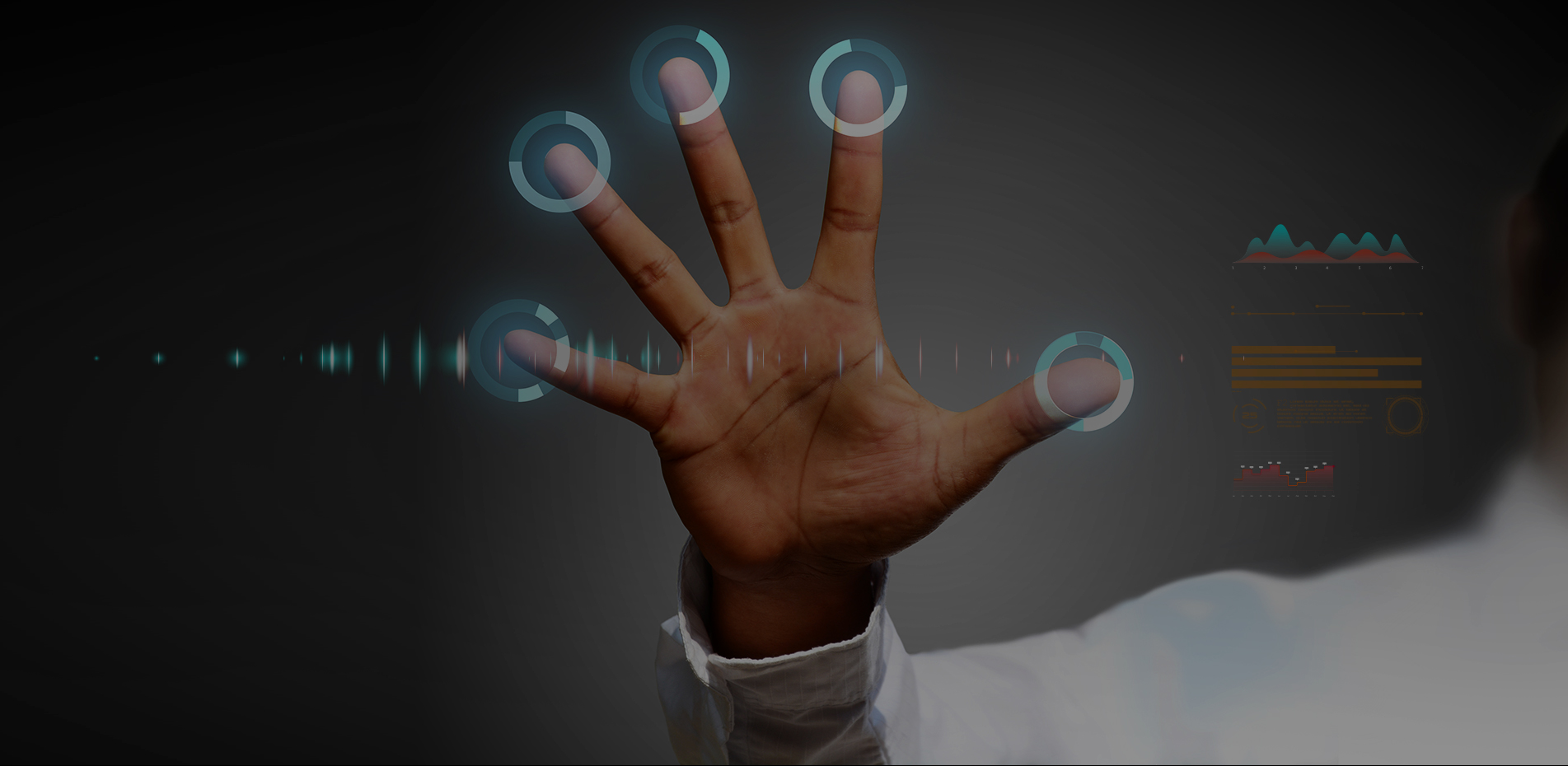
-
New Highly Secure
Authentication Technology -
Along with the growing interest in information security, personal authentication methods - such as fingerprints in place of the certificate system - are attracting a lot of attention these days. However, human fingerprints, irises and veins suffer from the issue of easy duplication as they require the use of two-dimensional images for authentication. Therefore, ETRI researchers developed a new biometric authentication technology by comprehensively utilizing human bone, muscle, fat, blood vessels, blood and body fluid.
This project tried to place emphasis on the structural features of the human body whereas the existing fingerprint- or iris-based authentication focused on exterior images. It shows differentiation by utilizing the inside of an object with the different body structure of each person. As such, authentication by finger will be safer as each person has different biological features.
Although human blood vessels and muscles are highly complicated, this technology is designed to reflect such anatomical features. It is similar to measuring body fat or ultrasonic imaging for regular health checkups. The technology is sufficiently advanced for a person to place the palm of their hand on the frame and/or device in order to register and authenticate themselves. Ultimately, it will pave the way for a highly secure new authentication method involving the natural DNA of each individual.
When external mechanical signals such as micro electronic signals or vibrations are provided, they will be transformed after passing through certain parts of the body such as the bones, muscles and blood vessels. ETRI's researchers have developed the technology to identify and authenticate an individual based on deep learning. As the signals vary for each person, it is easy to identify an individual. The external signals make it possible to determine the ratio of fat and muscle in the finger of the subject, which is then applied to authentication. The signals are transformed into frequencies, and individual absorption properties are taken into consideration.
-
DNA
(deoxyribonucleic acid)
A thread-like nucleic acid chain that
contains the genetic information of all
living organisms and many viruses.
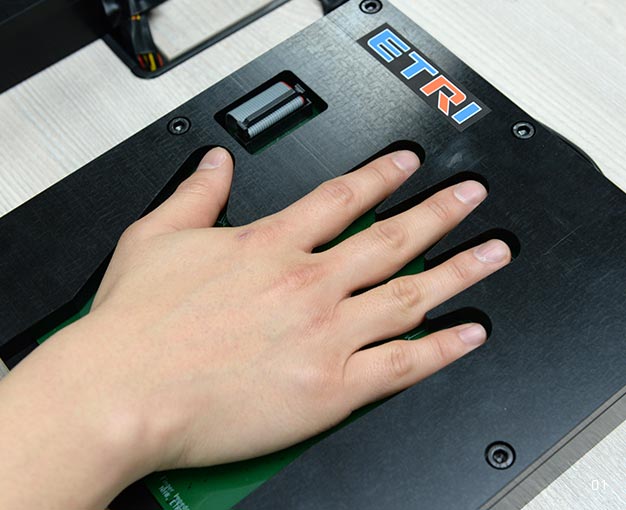
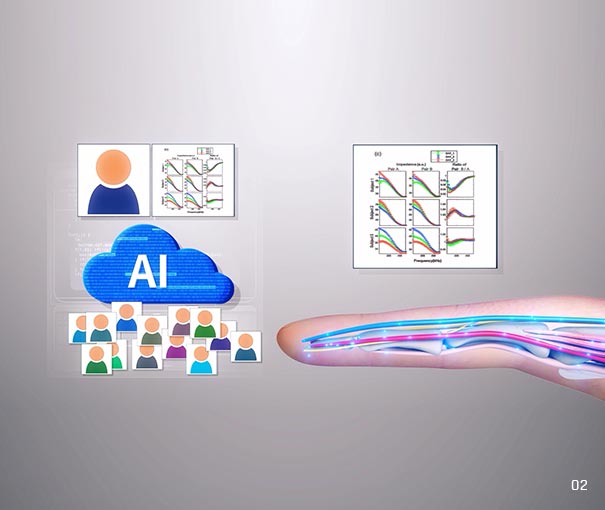
-
01
A hand on the user authentication
system developed by ETRI.02
A capture image of computer graphics
of the system (developed by ETRI) that
analyzes the results of sending signals
to a human body to authenticate the user.
-
Algorithms that
Maximize the
User's Features -
This achievement has been recognized for its excellence by leading international journals such as Scientific Reports) and IEEE Transactions on Cybernetics. According to the researchers, the core technologies of the project include a body tissue modelling technology, and a deep learning-based body signal analysis and electrode element technology.
ETRI's compact, palm-sized “human body delivery feature-based bio authentication system” consists of an energy transducer, sensor and signal processing unit to deliver electronic and acoustic signals. The algorithm, which maximizes the unique properties and reproducibility of the user by combining signals from different sensors, was developed and integrated into a wristwatch type of device so that electrodes can contact the wrist.
The researchers obtained approval from the IRB (Institutional Review Board) for a clinical trial with 54 subjects in order to obtain more than 7,000 items of clinical data. The clinical data were verified with a machine learning and deep learning model to improve the accuracy of biometrics to more than 99%. Obviously, the finger was selected to demonstrate its convenience, but any part of the body can actually be used. ETRI plans to make the unit smaller and lighter in the near future.
-
Scientific Reports
Online open access journal managed
by the publisher of Nature.
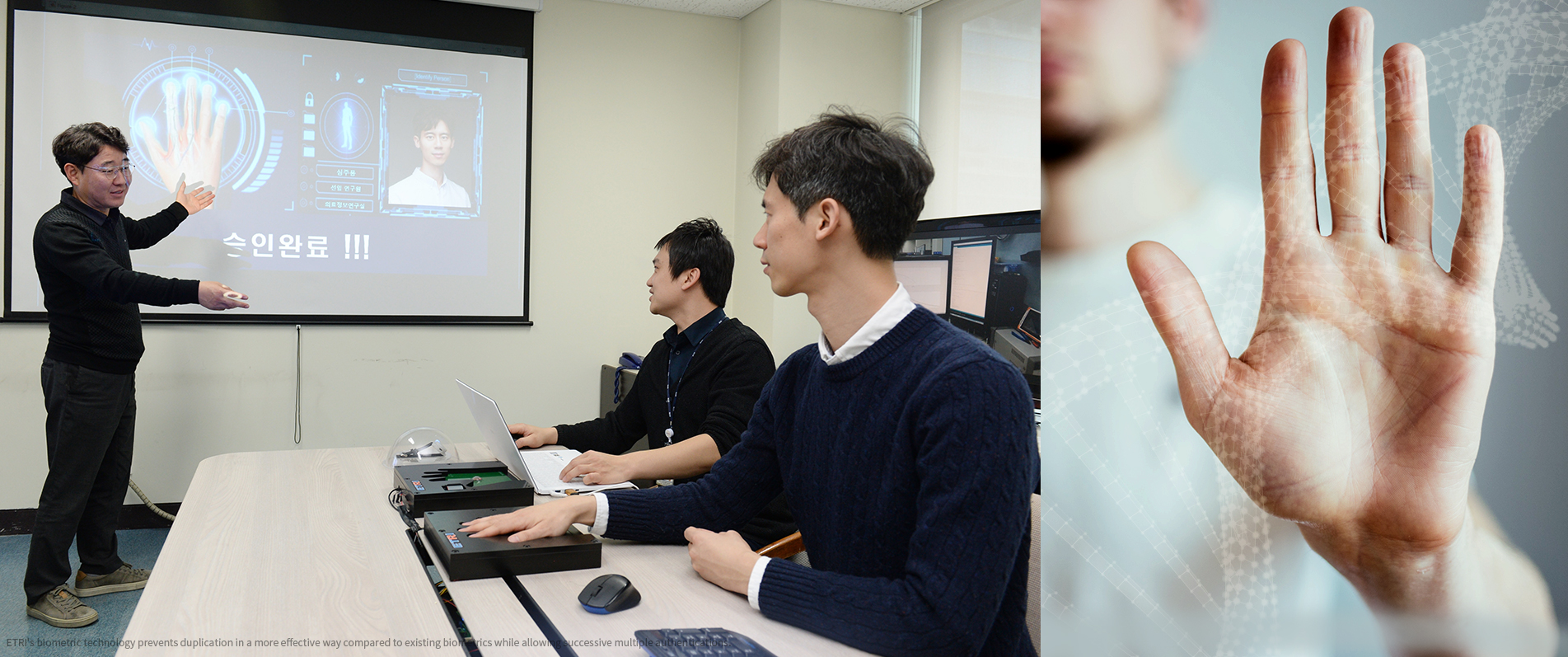
-
New Ways
of Biometrics -
The team of Professor Kim Nam-geun of Incheon National University cooperated in the successful mechanical modeling of signal delivery features of the human body. Optimizing the AI learning model will boost accuracy of biometrics in the future. Meanwhile, a mobile wearable platform that is expected to expand the scope of application and enhance convenience is currently under development.
This ETRI technology prevents duplication in a more effective way compared to existing biometrics, while allowing successive multiple authentications. It is also highly convenient in that any body part can be used for authentication. In addition, it enables “unconscious” authentication as the attached-type or mobile device does not require the user to place their fingertips or face on the display or sensor.
-
Institutional Review Board
(IRB)
Mandated by the Pharmaceutical Affairs Act,
the IRB independently reviews the methods
of obtaining the written agreement of test
subjects or clinical trial plans and continuously
monitors entire trials in order to guarantee the
rights, safety and well-being of the subjects.
-
03
ETRI's highly convenient Biometric
technology allows any part of the
body to be used for authentication 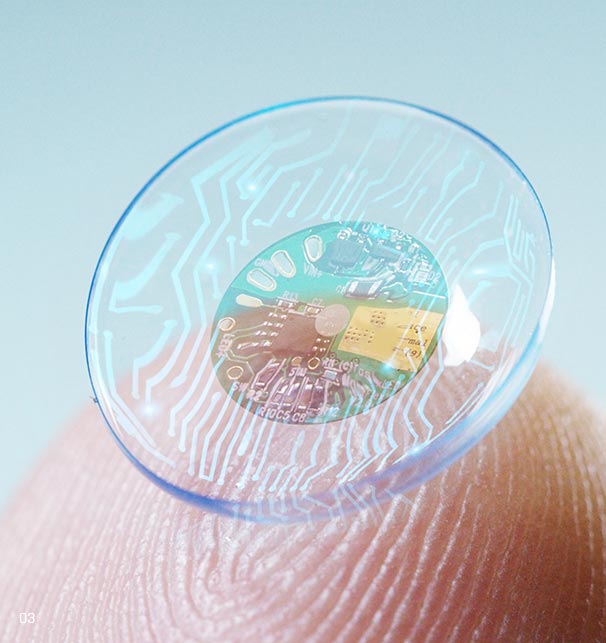
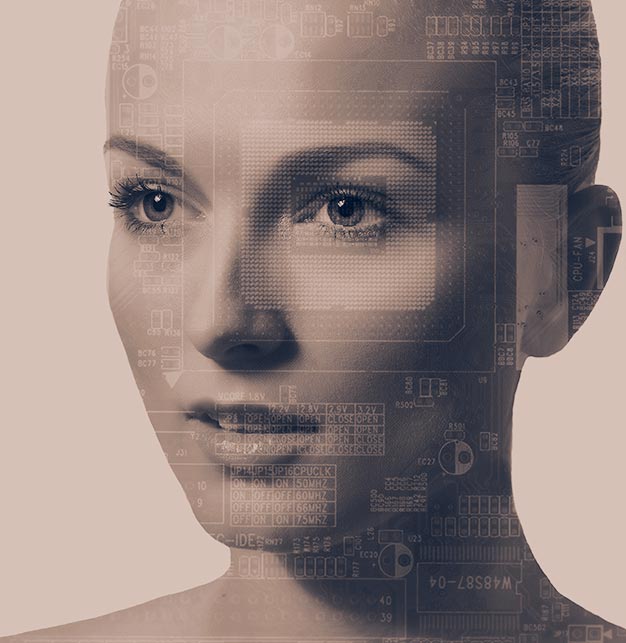
-
For example, if this technology is integrated as a chip in the part of a smartphone held by the user, simply holding it will enable authentication. It also is applicable as the handle or grip of a computer mouse, keyboard, or even of a vehicle. It may also be utilized in the form of a wristwatch for financial transactions or entry into a building for authentication. ETRI's researchers plan to work with globally renowned security providers to secure its full commercialization.
New and innovative ideas are turning our world into a safer and more convenient place. It is to be hoped that this technology will be used as the source tech of the biometric industry in the near future.

Author · Kilho, Chong, Director of Public Relations Department, ETRI
